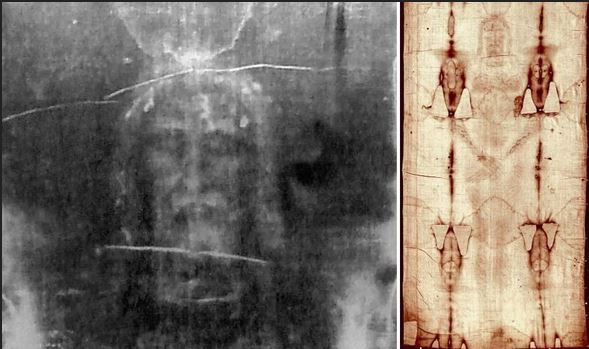John 20:24-29
Thomas, called Didymus, one of the Twelve,
was not with them when Jesus came.
So the other disciples said to him,
“We have seen the Lord.”
But he said to them,
“Unless I see the mark of the nails in his hands
and put my finger into the nailmarks
and put my hand into his side,
I will not believe.”
Now a week later his disciples were again inside
and Thomas was with them.
Jesus came, although the doors were locked,
and stood in their midst and said, “Peace be with you.”
Then he said to Thomas,
“Put your finger here and see my hands,
and bring your hand and put it into my side,
and do not be unbelieving, but believe.”
Thomas answered and said to him,
“My Lord and my God!”
Jesus said to him,
“Have you come to believe because you have seen me?
Blessed are those who have not seen and have believed.”
In truth, there really is nothing so terribly wrong that the apostle Thomas professed his skepticism about the resurrection, insisting that he could not believe unless and until he himself saw the resurrected Christ. After all, God made us bodily and sensory creatures who rely on our (five) senses to navigate in this world and to determine truth and falsity.
But when Thomas did see Jesus, who had died on the cross but now came into the room through solid walls, Thomas instantly understood the import of the empirical and miraculous confirmation he had sought. Falling down before the resurrected Christ, Thomas proclaimed: “My Lord and my God!”
And yet, there are those who, despite seeing and witnessing miraculous phenomena that science cannot explain, still refuse to believe.
Among them were the Israelites who, led by Moses, witnessed and experienced the following miracles:
- The ten plagues of Egypt:
- Water turned to blood (Exodus 7:14-25).
- A plague of frogs (Exodus 8:2-14).
- A plague of lice (Exodus 8:17-18).
- A plague of flies (God sent “grievous” swarms of flies upon all the people and houses of Egypt, covering even the ground, except in the land of Goshen where the Israelites dwelled fly-free. –Exodus 8:20-24).
- Murrain, an infectious disease, killed all of Egypt’s cattle (Exodus 9:3-6).
- A plague of boils with blisters (Exodus 9:8-12).
- Thunderstorm of hail (Exodus 9:13–35).
- A plague of locusts covering all of Egypt, so that the land was darkened with them (Exodus 10:12-15).
- A plague of of darkness “which may be felt” so that “they saw not one another” covering all of Egypt, but not the land of Goshen (Exodus 10:21).
- Death of all first-born in a single night, which spared Israelite first-borns (Exodus 11:1-8; 12:29-30).
- The burning bush that was not consumed (Exodus 3:3).
- The cloud resting on the Ark of the Covenant (Exodus 13:21-22; 33:9-10; 40:36).
- God appeared in the cloud (Exodus 16:10).
- Aaron’s rod changed into a serpent (Exodus 7:10-12).
- The parting of the Red Sea (Exodus 14:21-31).
- The parting of the Jordan river near the city of Adam (Joshua 3:14-17).
- Manna (bread) from the sky (Exodus 16:14-18).
- Drinking water provided the Israelites:
- Sweetening of the bitter waters of Marah (Exodus 15:23-25).
- Water from the rock at Rephidim (Exodus 17:5-7).
- Water from a rock in the desert (Numbers 20:7-11)
- Complainers consumed by fire at Taberah, which stopped in response to Moses’ prayer (Numbers 11:1-3).
- Enemies of Isralites consumed by fire, and swallowed by the earth (Numbers 16:35-45).
- Aaron’s rod “brought forth buds, and bloomed blossoms, and yielded almonds” at Kadesh (Numbers 17:1-11).
- The walls of Jericho fell down at God’s command (Joshua 6:6-20).
- The sun and moon stayed motionless (longer day) to enable the Israelites to win a crucial battle (Joshua 10:12-14).
- A mega hailstorm destroyed the Amorite army (Joshua 10:12-14).
Despite having personally seen and experienced the countless miracles, not only did the Israelites constantly doubt God, with tiresome repetition they periodically rebelled from God to worship false idols, that is, demons.
But God repeatedly forgave the Israelites.
Imagine, then, how much He loves us — who believe in Him although we haven’t witnessed the Israelites’ miracles nor seen or touched His wounds like doubting St. Thomas, yet we love Him with our whole heart, our whole soul, our whole mind, and with all our strength.
1 Peter 1:8-9
Although you have not seen him you love him;
even though you do not see him now yet believe in him,
you rejoice with an indescribable and glorious joy,
as you attain the goal of your faith, the salvation of your souls.
So the next time you doubt or falter or despair, take heart.
He loves you very, very, very much.
So much that God Himself did this for you.

See also “Easter Sunday: The science of the miracle of the Resurrection”
May the peace and love of Jesus Christ our Lord be with you!
~E





















